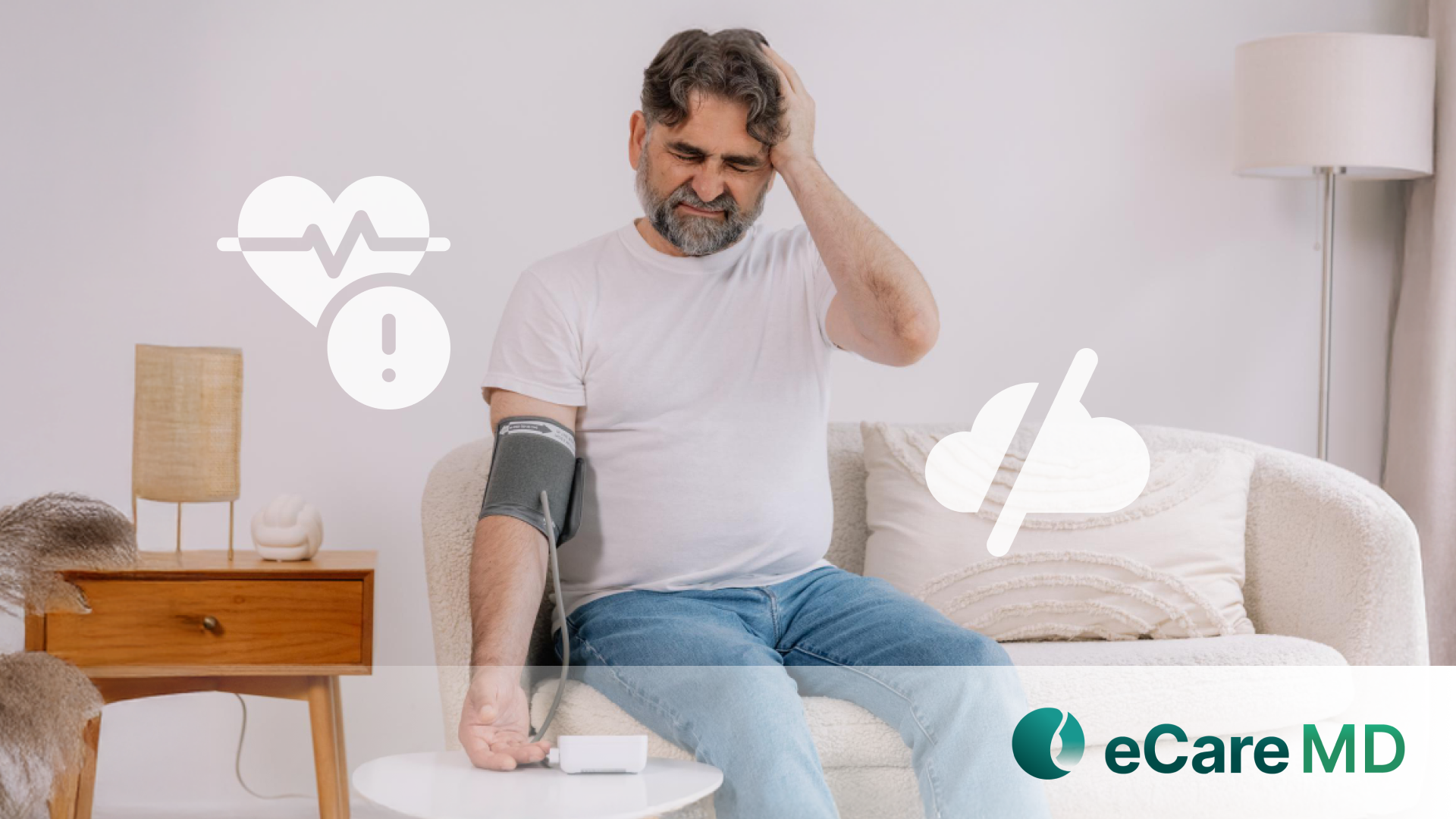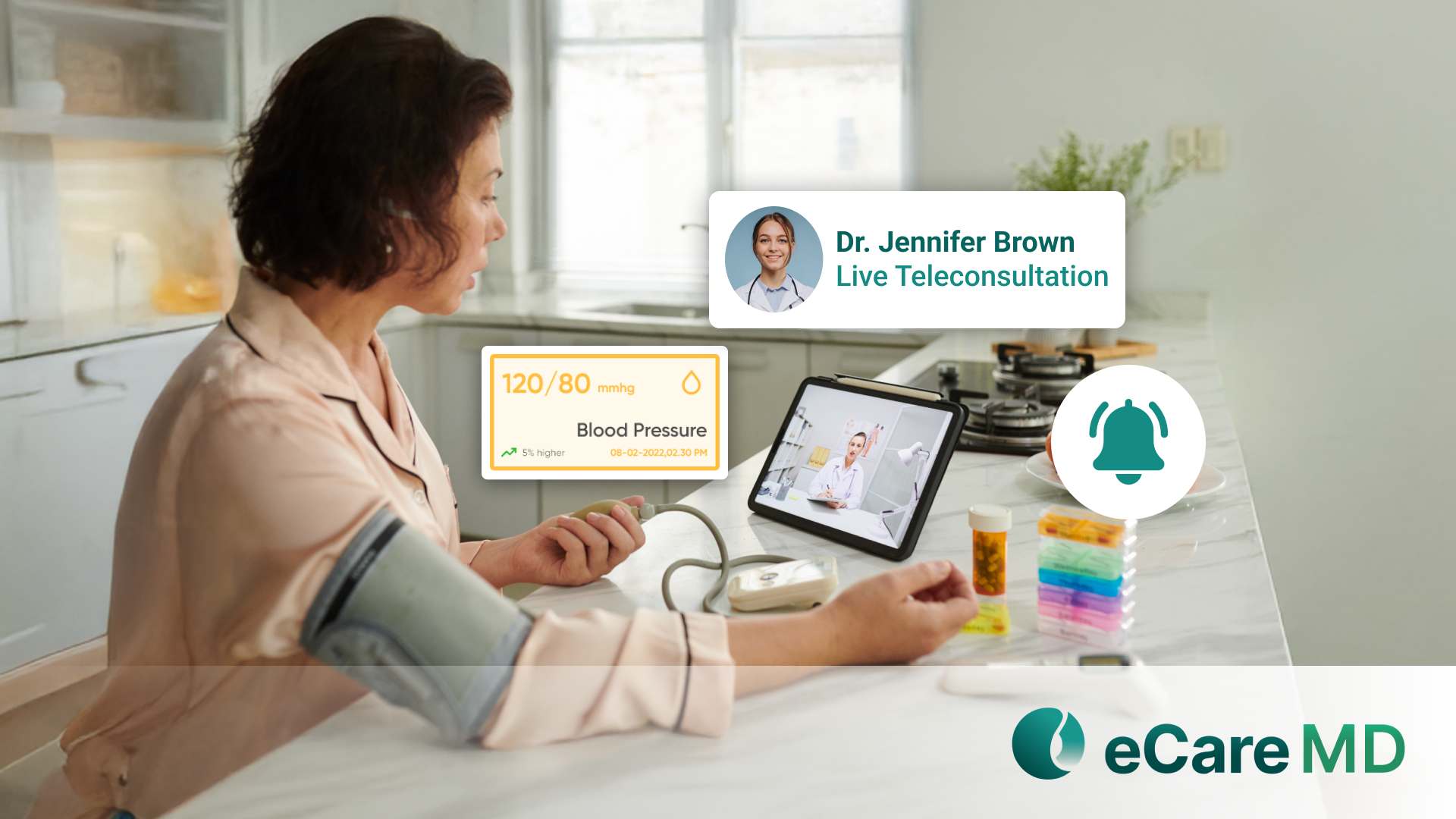Client Overview
The client is a primary care practice with 4 physicians handling around 400 patients diagnosed with hypertension, who require constant blood pressure management. The practice primarily serves a large patient base that has Medicare coverage, where uncontrolled blood pressure was leading to frequent cardiovascular emergencies and unwanted hospital visits. With multiple patients experiencing heart attacks, the practice urgently needed to implement Medicare's Remote Patient Monitoring (RPM) program to provide continuous monitoring for patients with hypertension and achieve better outcomes.
Business Challenges
1. Lack of real-time patient blood pressure tracking

While managing patients with hypertension, patients’ vital data plays a crucial role in determining their timely health outcome, the practice has no automated digital workflow to capture the patient’s vitals such as blood pressure, which has a significant contribution in managing patients diagnosed with hypertension. The lack of this blood pressure monitoring has affected patients’ daily health outcomes, putting patients’ health at risk.
2. 65% of patients not reaching target BP control
For the active hypertension patients, as the client’s practice has no real-time monitoring system, which is causing difficulty for care managers to manage patients’ targeted Blood pressure by providing planned care. As care providers have failed to provide a necessary action plan for the patient’s blood pressure on time, the practice is facing 65% of its patients who have not reached their controlled level of blood pressure. This clinical problem needs to be resolved immediately, as uncontrolled vitals are causing emergency cases for their patients. As this problem is frequently increasing, the patients are facing cardiovascular emergencies and have a risk of heart failure all the time.
3. Frequent medication adjustments without proper monitoring data
Because of a gap between patient real-time outcomes and required care, the patients are not receiving any frequent follow-ups on required Medication reconciliations, causing a delay in patient medication adherence. This results in mismanagement of patient care, and care providers need to make adjustments while prescribing medications without proper monitoring and patients' data.
4. Staff are overwhelmed with manual blood pressure tracking and follow-up calls
For monitoring patients with hypertension and High blood pressure, which requires constant vital monitoring, the current manual vitals tracking is failing patient care. This results in irregular patient monitoring, mismanagement in medication provision, leading to poor care delivery. Additionally, the manual process causes missed follow-up calls during required situations for the patients.
Solution
To enhance the RPM patient monitoring and manage patients’ daily blood pressure with the goal of zero heart failure patients, the client’s team has interacted with Medarch Inc., which has patient-oriented healthcare software, to encounter and implement the integrated solution. The care coordination software “eCareMD” was introduced by Medarch’s business analyst team. The “eCareMD” solution successfully encountered the challenges in the client's business, providing key solutions to automate Remote patient monitoring. Some of the key solutions were implemented as below;
Solution Highlighted
1. Automated Blood Pressure Monitoring with Real-Time Data Transmission

The eCareMD has the ability to assign and integrate with medical devices such as Blood pressure monitors, pulse oximeters from different vendors. This integration fetches the real-time patients' data, such as blood pressure vitals, through devices and shows it in eCareMD with daily analytics, which help care managers to monitor patients’ vitals in real time, preventing health risks and mapping the daily progress.
2. Configurable Clinical Alerts and Risk Stratification System
The eCareMD provides alert configuration system on patients’ vitals from which they can set the risk level, manage alert notification on a particular level of vital, such as low, medium, high, along with “notify to” providers. The care team receives an alert notification through Text/SMS, email, and push notifications on eCareMD. This alert system helps care team members to oversee patients’ critical vital signs and provide necessary action to prevent health risks.
3. Live Vital Sign Dashboard and Trend Analysis
The dedicated RPM Dashboard of eCareMD has the ability to provide numeric and visual insights on a patient’s health, such as live alerts, total reading days, Device supplied, etc. These data helped providers to analyze patterns in patient care in order to monitor risk levels and find trends in fluctuation of vital readings. The Dashboard also includes the billing insights to which show month-specific billable patients and their qualified CPT codes.
4. Integrated Care Management and Patient Engagement Tools
The eCareMD platform includes interactive patient engagement features, including medication reminders, educational content, and two-way communication channels. Patients receive automated reminders to take their vital readings and medication, along with providers' reminders. The providers can send personalized messages to increase patient engagement and will make sure consistent monitoring.
Value Delivered
1. Achieved 90% Blood Pressure Control Rate Within 12 Months
After implementing the eCareMD software, the client’s practice successfully achieved 90% of blood pressure control rate with the help of constant and timely reviewed blood pressure data on eCareMD within 12 months of platform implementation. This is also helpful for patients to improve their involvement in self-care management.
2. Reduced Cardiovascular Events by 50% and Emergency Department Visits
While controlling the patient’s blood pressure under control the eCareMD also contributed to preventing Cardiovascular events such as Strokes, heart failure, and shortness of breath. The successful patient monitoring has led to a reduction in unnecessary emergency department visits by 50% of RPM Patients.
3. Optimized Medication Management and Improved Patient Adherence
The proactive medication management system has improved patient adherence to their timely prescribed medications, diet plans, and care progress. With the automated workflows, ecareMD provides more patient engagement on their health journey, resulting in comprehensive patient outcomes.
4. Enhanced Staff Efficiency and Reduced Administrative Burden
eCareMD includes an integrated solution to optimize provider workflows, streamlining day-to-day tasks, staff management, and role-based access has been helpful to the client’s business, enhancing staff efficiency and reducing administrative burden.

